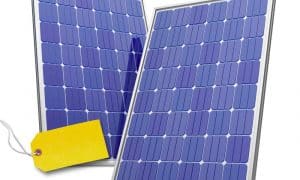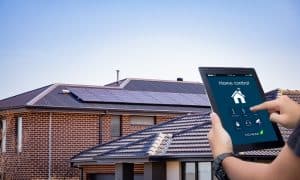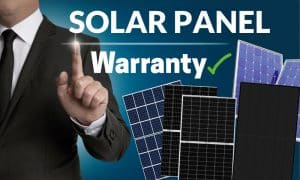When you install solar panels, you’ll undoubtedly want to get the most out of it. After all, it’s a huge investment. To make the most out of your solar panels, you need to make sure that they are performing optimally. However, there are a lot of factors that could potentially affect its performance. The changing seasons are often the greatest influences on their performance.
PV panels work well under direct sunlight, and Australia experiences plenty of it. Direct sunlight is where these panels get solar power from and not from the heat of the sun, which is a common misconception.
That’s why it’s necessary to understand the seasonal solar performance of your panels to ensure that you get the most out of them.
Seasonal weather patterns

- Clouds: Clouds can impact the amount of sunlight that reaches your solar panels, which can affect solar energy production.
- Rain: Rain clouds can block sunlight temporarily. The rain can also help in cleaning off build-up dirt on the panels, which can improve their efficiency.
- Wind: High winds can cause damage or dislodge the solar panels.
Depending on the current technology of your solar panels, you can still ensure you get the most out of it regardless of the season.
- Monocrystalline: Best for tropical climates that experience intense sunlight. This solar technology is known for its high solar panel efficiency, temperature tolerance, and anti-reflective coatings.
- Polycrystalline: Perfect for arid and temperate climates that experience extreme heat and dust or moderate weather. This technology works best for its durability, heat and dust resistance, self-cleaning coatings, and competitive efficiency ratings.
- Bifacial: Perfect for areas that experience alpine climate with snow, such as Tasmania, Victoria, New South Wales, and a small region of SE Queensland. Bifacial solar panels work best because they have snow load tolerate and capture reflected sunlight.
Protection against extreme weather conditions
Depending on your location, you may have to deal with other extreme weather considerations, such as:
- Bushfires: Solar monitoring devices recorded around 30% production loss due to the accumulated ash particles and dust on solar panels. Even a bit of light dusting can impact the amount of solar radiation received by the panels. Increased smoke density can also block out sunlight to a certain extent.
- Hailstorms: Solar panels are usually made from tempered glass that can withstand hailstones. However, poor-quality panels can get damaged. Investing in high-quality panels is vital if you’re in an area that experiences frequent hailstorms. Based on Australian standards, solar panels should be able to withstand the direct impact of hailstones with a diameter of 35mm.
- Cyclones and strong winds: If you experience frequent rough winds or cycles, investing in extra secure mounting is a good choice.

The right temperature for your solar panels
You might think that if it’s not the heat that these solar panels are getting their power from, then why does the temperature matter? All solar panels have a coefficient usually between 0.20-0.50 per cent. This is the efficiency percentage the solar panel will lose for every degree Celsius over the optimal temperature. The ideal temperature for solar energy production is around 25 degrees Celsius.
The ideal time of day for the best solar performance
Between 10 am and 4 pm are the ideal times to get the most out of your solar panel. At this time, the sun is at its highest point in the sky.
How to make the most out of your solar panels
Solar panel maintenance
Your solar panels require little maintenance, but it requires regular inspections to ensure that they are undamaged, clean, and functioning well.
Quality solar installations
Solar panels must be installed securely and accordingly based on manufacturer specifications. Energy Matters is the leading supplier of solar suites in Australia due to its vast partnership network of high-quality installers. We can connect you to the best installers in your area to ensure that your solar system can withstand even extreme weather conditions.
Solar tracking systems
Consider getting solar tracking systems for your system. Solar trackers automatically adjust the orientation of your panels to track the sun’s movement throughout the day. In turn, this maximises sunlight exposure and seasonal energy production.
Solar panel placement
Make sure your solar panels are installed in unobstructed areas where they can get the most sunlight.
Solar battery
Consider investing in a solar battery to store excess energy. You can use the stored energy during periods of low sunlight.
Solar energy usage patterns
You can also consider adjusting your energy usage patterns to match your solar energy production. This means using high-energy appliances during peak sunlight hours.
Seasonal weather and unexpected events can impact the performance of your solar panels. The good news is that you can still get the most out of your solar system by following the tips we listed in this article.
Energy Matters has been in the solar industry since 2005 and has helped over 40,000 Australian households in their journey to energy independence.
Complete our quick Solar Quote Quiz to receive up to 3 FREE solar quotes from trusted local installers – it’ll only take you a few minutes and is completely obligation-free.













































